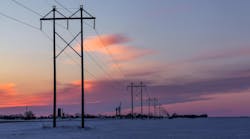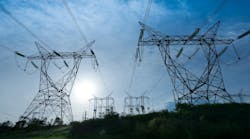Florida Power & Light Co. plans to invest more than $200 million in 2009 as part of its ongoing investment program to make the electrical infrastructure more resistant to increased hurricane activity. The company discussed its 2009 plans and 2008 accomplishments in its annual storm strengthening and reliability report filed March 2nd with the Florida Public Service Commission (PSC).
“We are continuing to invest to make our infrastructure stronger and more reliable in good weather and bad. While no system will be immune to the devastating power of a hurricane, our goal is to minimize damage to critical infrastructure and increase the resiliency of the system. And while these investments are designed to respond to the potential for more frequent, more powerful hurricanes, they are also delivering customer benefits by enhancing day-to-day reliability as well," said FPL President and CEO Armando J. Olivera.
2008 Infrastructure Investments and 2009 Action Plan Following the 2004–2005 hurricane seasons that saw seven storms in a 15-month period, FPL responded to the state’s call to maintain a high level of storm preparation no matter whether a hurricane season has been mild or severe. FPL embarked on a series of comprehensive investments and expenditures to strengthen its electric infrastructure to better withstand the impact of severe weather, recognizing that no utility can be 100 percent storm-proof. They are:
- Distribution Pole Inspections. FPL has completed the second full year of its eight-year distribution pole inspection program. Since May 2006, the company has inspected more than 380,000 poles, or about one third of its 1.1 million poles. Using an aggressive three-pronged approach of inspections, record keeping and reporting, FPL is examining approximately 500 poles a day throughout its service area. In 2009, FPL plans to inspect 139,000 poles at a total cost of $32 million to $42 million.
- Transmission Structure Inspections. In 2008, FPL inspected more than 16,000 transmission structures, or 25 percent of the total. In 2009, the company plans to invest between $1.8 million and $2 million to inspect at least 17 percent of its transmission structures. The company also plans to spend an additional $14 million to $16 million completing transmission work identified during the 2008 inspections.
- Distribution Vegetation Management. In 2008, FPL continued its three-year cycle for clearing vegetation from distribution main lines and completed the second year of its six-year cycle for neighborhood lines. Overall, FPL trimmed trees and cleared vegetation from more than 11,000 miles throughout the state. Total costs in 2008 were $57.9 million, with 2009 costs expected to be $68.3 million. • Strengthening the Distribution System. In 2008, FPL upgraded and strengthened power lines serving 49 acute medical care facilities, two power plants, and 32 major highway crossings. FPL also strengthened poles, wires and equipment on 21 main lines serving areas where businesses such as grocery stores, pharmacies and gas stations serve the basic needs of communities. Costs for these initiatives totaled $54.6 million. In 2009, FPL plans to complete the strengthening of power lines and equipment serving the remaining 18 acute medical care facilities in its service area. FPL also plans to strengthen power lines serving 26 hospitals, 35 emergency (911) facilities, one emergency operations center, two police stations, one fire station, 40 major highway crossings, and 11 power lines running along main thoroughfares. The total 2009 investment is expected at $85 million.
- Storm Readiness. FPL is preparing for the 2009 storm season by completing all tree-trimming of power lines serving hospitals, 911 emergency centers, special needs shelters and police and fire stations by June 1. In May, FPL is planning to prepare its workforce through its annual company-wide hurricane dry run exercise. FPL is completing its plans for additional out-of-state workers essential to a restoration effort. The company is also working to secure potential staging sites and restocking its storm material inventory.
2008 Reliability Performance The reliability of FPL’s distribution system was the best ever in 2008. The average amount of time FPL customers were without power due to distribution issues in 2008 fell to 67 minutes from 73 minutes the year before as measured on the System Average Interruption Duration Index (SAIDI), which utilities nationwide use to report their reliability performance. FPL’s score on the index is 47 percent better than the latest national average of 126 minutes compiled in 2007. The distribution system consists of the poles, wires and transformers that service streets and neighborhoods.
FPL’s distribution reliability improved on other measures as well. The system average frequency of power interruptions was reduced by 12 percent, and the average number of times a customer experienced momentary power interruptions decreased by 8 percent.
In addition to FPL’s investments in programs to better withstand the impact of severe weather, in 2009, FPL will invest an estimated $48 million on distribution reliability programs aimed at further reducing customer outages through aggressive preventative maintenance projects on its overhead and underground facilities.
FPL also reported that its transmission system – the high-voltage lines that carry electricity from power plants to substations – experienced a longer than usual service interruption due to the Feb. 26, 2008, substation event. On that date, a field engineer was diagnosing a switch that had malfunctioned. Without authorization and contrary to FPL’s standards and procedures, the engineer disabled two levels of relay protection. A fault occurred, and because both levels of relay protection had been removed, it caused an outage that affected approximately 600,000 FPL customers in southeast Florida for an average of one hour. The outage raised the average annual amount of time customers were without power due to transmission issues from four minutes to 13 minutes.
“This incident was an aberration from the high quality of service we provide, and we deeply regret the inconvenience that it caused our customers and the communities we serve,” Olivera said. "We are always working to improve our performance so that our customers continue to enjoy overall service reliability levels among the best in the country."
Excluding the 2008 substation outage, over the past five years (2004–2008) FPL’s transmission system has achieved an annual average amount of time of customers without power of less than four minutes.

